Gardening can be a restorative and rewarding practice, especially when it comes to growing your own herbs. The flavors of fresh basil, the aroma of thyme, and the vitality of parsley can be brilliant additions to any home garden. Yet, sometimes despite our best efforts, our green endeavours may not flourish as expected. Through this insightful guide, I will address the common pitfalls that might be hindering the success of your herb garden.
Whether you garden on a balcony, in window boxes, or in a backyard plot, recognizing and avoiding these errors can transform your struggling herbs into a lush, vibrant, and thriving garden.
So, let’s see together what are the 10 most common mistakes in growing a herb garden:
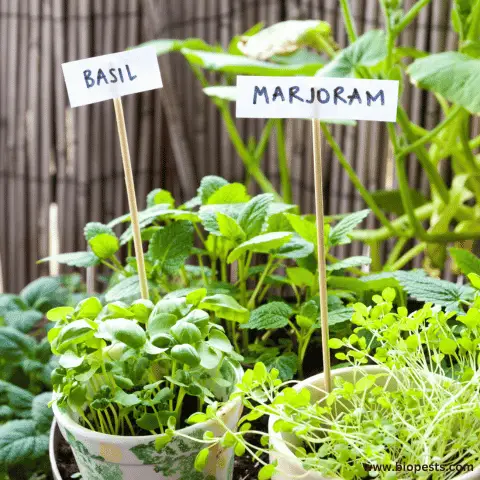
1. You Underestimated the importance of Sunlight
Herbs are like solar panels; they thrive on light to generate the energy they need to grow. Most herbs hail from Mediterranean climes, accustomed to the generous embrace of the sun. To replicate these conditions, understanding the role of sunlight is essential.
Sunlight is the lifeblood of all plants. It’s involved in photosynthesis – the process by which plants convert light into glucose, fueling their growth. Herbs, in particular, need a good dose of direct sunlight to produce the concentrated flavors that enliven our cuisines.
Ideal Sunlight Exposure
Your herb garden should receive at least 6-8 hours of sunlight per day. The ‘sweet spot’ of exposure ensures your herbs have enough energy for robust growth without the risk of wilting under too intense heat. The quality of sunlight also impacts essential oils in the herbs, directly influencing their aroma and flavor profile.
Selecting the Perfect Position for Your Herb Garden
The positioning of your herb garden is a dynamic aspect often overlooked. Whether you’re cultivating in pots on a windowsill or plotting out a backyard garden, the right position can make all the difference.
The direction your garden faces affects the kind of sunlight it receives. In the Northern Hemisphere, south-facing gardens bask in the most sunlight. East and west positions can offer moderate sun with often less intense afternoon rays, while north-facing gardens might struggle for light.
Impact of Seasonal Changes
As the seasons transition, the angle of sunlight shifts. Keep in mind the changes in shade patterns and intensity throughout the year. What works in the long days of summer might not hold up come autumn. Your garden’s position should adapt to these changes to maintain consistent light exposure.
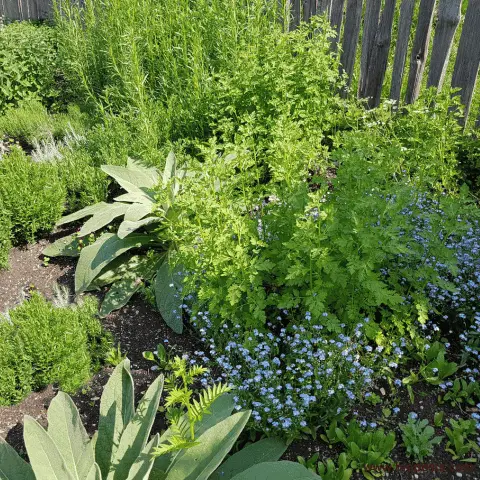
The Crucial Interplay Between Location and Lighting
Finding harmony between the location of your herb garden and its lighting can transform the health and productivity of your herbs.
Microclimate Matters
Every garden has microclimates — small pockets that differ in temperature, wind, and light. By placing your herb garden in a microclimate that closely replicates Mediterranean conditions — warm, with ample sunlight and good air circulation — you enhance the environment for your herbs.
Shelter and Adaptability
Your location choice should also factor in protection from harsh elements. A spot that receives plentiful sunlight but sits exposed to strong winds might need adaptation, such as a protective barrier or choosing hardier herbs.
Adjusting for Indoor Gardening
If your herbs call the indoors home, their reliance on correct lighting doesn’t wane. Windows are the gateway to natural light, so place your herbs near south or southwest-facing windows. Remember, glass filters and reduces light intensity, so consider supplemental lighting during darker months.
Here you can read my article about creating an indoor herb garden.
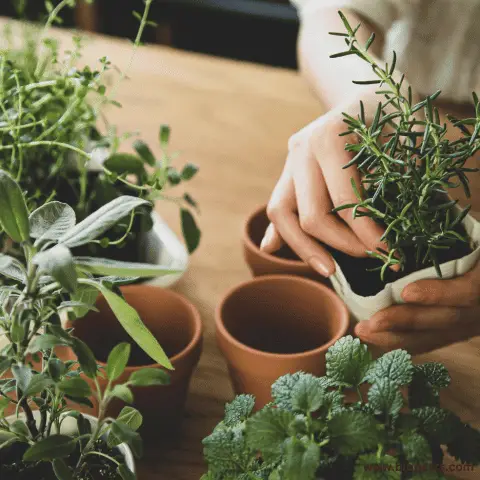
2. You Are Either Overwatering Or Underwatering
A common herb gardening mistake is too much enthusiasm for the watering can or forgetfulness. Overwatering or underwatering can be both detrimental.
Based on my experience, it is crucial to maintain the initial enthusiasm and regularly water the herb garden after its creation. Otherwise, the excitement fades away, and the garden may not thrive as expected.
Understanding Watering Needs
Herbs are like people—each has its own personality and preferences, especially when it comes to their hydration needs. A succulent rosemary will raise its silvery leaves at the thought of the same amount of water that keeps basil lush and verdant. Climate, soil type, and whether your garden is potted or planted directly in the ground all come into play.
Getting to know your herbs and their unique requirements is the first step. Mediterranean varieties such as oregano, thyme, and sage enjoy a more arid environment, while others like cilantro and parsley may ask for a drink more often.
Signs You Are Underwatering Your Herb Garden
A parched herb garden is a sad sight. Leaves begin to wilt, growth becomes stunted, and soil has all the moisture of a desert. Keep an eye out for these symptoms, as they are your garden’s plea for a quenching.
Few things are as satisfying as the sensation of rich, moist soil crumbling between your fingers—a stark contrast to the dry, lifeless medium found in an underwatered pot. If you spy these signs, it might be time to up the ante on your watering routine.
Signs Your Are Overwatering Your Herb Garden
Just as detrimental is going overboard with your watering can. Yellowing leaves can be a telltale sign of overindulgence, as can the emergence of unwelcome guests like mold, fungus, or the dreaded root rot. Remember, herbs appreciate moisture but need to breathe, too!
Watering Techniques
Mastering the art of watering is like conducting a symphony—every note matters. The frequency and quantity of water depend on myriad factors, including the season and the stage of growth. Timing is also crucial; morning generally is the best time to water, allowing plants to drink up before the heat of the day.
Indoor and outdoor herb gardens will have distinct needs, but both will benefit from uniform, gentle watering that reaches the roots without flooding the soil surface or the foliage.
Proper Drainage
The axiom “right plant, right place” rings true here, particularly when it comes to drainage. Herbs abhor “wet feet,” and well-draining containers can be their salvation. For garden beds, measures such as adding perlite or sand to heavy soils can improve water flow and prevent stagnation.
Water Conservation Tips
In our eco-conscious times, it’s not just about watering correctly but doing so sustainably. Collecting rainwater reuses what nature provides, and mulching conserves it by reducing evaporation.
If you live in a warm climate like me, consider investing in devices like drip irrigation or self-watering systems. They offer targeted hydration while minimizing waste.
3. You Are Using The Wrong Soil
Herbs are particularly fussy about the soil they reside in and soil is more than just dirt. It is a complex system that consists of minerals, organic matter, water, air, and living organisms. There are three main types of soil: sandy, loamy, and clay. Sandy soil drains quickly but lacks nutrients while clay soil retains moisture but can be heavy and difficult for roots to penetrate. Loamy soil is considered ideal for planting as it has a balance of sand, silt, and clay that provides good drainage and nutrient retention.
Importance of pH Level
The pH level of the soil also affects the growth of plants. The pH scale ranges from 0-14; 7 being neutral. Most herbs prefer a slightly acidic soil with a pH range between 6-7. Some examples include parsley, basil, thyme, oregano, and sage. If the pH level is too low or too high outside their preferred range, it can affect their ability to absorb nutrients from the soil.
Signs Your Herbs Need New Soil
If your herbs are not growing as they should be or seem stunted in size despite proper care such as watering regularly or providing enough sunlight, it may be time to change the soil. Other signs include yellowing leaves or abnormal leaf drop.
Choosing the Right Soil for Your Herb Garden
Choose a potting mix that is specifically formulated for herbs. It should be well-draining, contain organic matter such as compost or aged manure, and have a pH level within the preferred range for your specific herbs. You can also make your own soil mix by combining equal parts of sand, peat moss, and perlite.
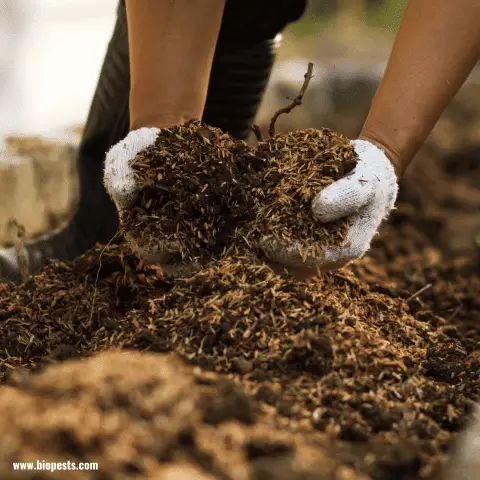
Repotting Your Herbs
Repotting your herbs in new soil is easy. Gently remove the plant from its current container and remove any excess soil. Place the plant in the new pot and fill it with fresh soil, making sure to leave enough space at the top for watering.
4. You Planted Incompatible Herbs Together
Not all herbs like each other’s company. Some require more water, while others like it dry. Planting herbs with different needs together can compromise their health. Do a bit of companion planting homework to see who’s a match!
Here is a list of friendly herbs that enjoy each other’s company:
Basil and Parsley
Basil (Ocimum basilicum), with its robust flavor, pairs well with the milder parsley (Petroselinum crispum). They share a love for full sun and moist soil, making them perfect garden companions.
Chives and Rosemary
Chives (Allium schoenoprasum) naturally repel pests with their oniony scent, which benefits their delicate neighbor, rosemary (Rosmarinus officinalis). Both herbs prefer well-drained soil and plenty of sunshine.
Mint and Oregano
Aromatic and vigorous, mint (Mentha spp.) should be planted with care to avoid overtaking other plants. However, it forms a mutual companionship with oregano (Origanum vulgare) as they both thrive in similar light conditions and slightly drier soils.
Thyme and Sage
Thyme (Thymus vulgaris) with its low-growing habit makes a great partner for sage (Salvia officinalis). Their preference for slightly sandy, well-drained soil and full sun makes them an excellent match.
Dill and Cilantro
Both dill (Anethum graveolens) and cilantro (Coriandrum sativum) attract beneficial insects and share a requirement for a balance of sun and shade, making them suitable neighbors.
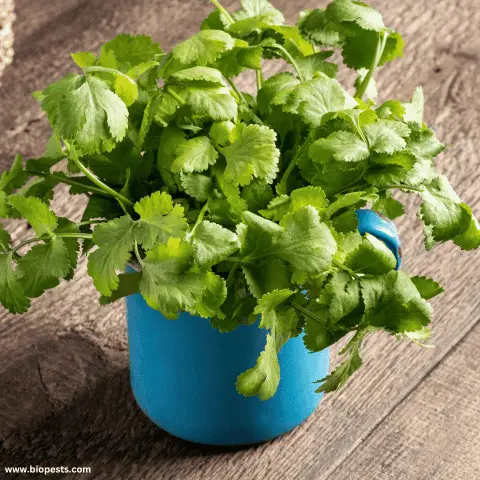
Herbs to Avoid Planting Together
Just as some herbs flourish together, others may inhibit each other’s growth. Here’s a list of herbs that are best kept apart:
Fennel and Most Herbs
Fennel (Foeniculum vulgare) is a beautiful but somewhat selfish herb. It emits a chemical from its root that can inhibit the growth of other plants, so it’s best to give fennel its space.
Rue and Basil
Rue (Ruta graveolens), with its strong scent and flavor, does not make friends easily in the herb garden. Keep it away from basil, as it can negatively affect the plant’s flavor and growth.
Garlic and Parsley
Although both flavorful in cooking, garlic (Allium sativum) can stunt the growth of parsley if planted too close. It’s best to separate these two to ensure they both can prosper.
Sage and Cucumber
This might be surprising, but the robust sage can impact the flavor and growth of cucumber plants if they’re in close proximity. Keep them in different plots for optimal results.
Mint and Most Herbs
Due to its aggressive growth pattern, mint can quickly overwhelm other herbs. It’s often recommended to plant mint in its own pot to prevent it from encroaching on the territory of others.
5. You Started Your Herb Garden By Seed
Starting an herb garden by seed may seem like a fun and affordable way to grow your own herbs. However, many gardeners find that starting herbs from seed can be challenging and frustrating. In fact, there are several reasons why you should consider alternatives to starting a herb garden by seed if you want to see it thrive. Let’s explore the reasons why starting an herb garden by seed may not be the best option for you.

Unpredictable germination rates
One of the biggest challenges with starting a herb garden by seed is unpredictable germination rates. Even if you follow all of the instructions on your seed packet, some seeds simply won’t germinate. This can leave empty spots in your garden or require re-sowing the seeds. Additionally, germination rates can vary depending on factors such as temperature and moisture levels which can be difficult to control.
Slow growth rate
Even if all of your seeds do germinate successfully, it can take several weeks or even months before they are mature enough for harvesting. During this time, young plants are vulnerable to pests and diseases which can easily wipe out your entire crop before it even has a chance to thrive.
Limited variety
Many garden centers only carry a limited selection of herbs in their seed section which means that you may miss out on some unique varieties that could add flavor and interest to your cooking.
Cost-effective alternatives
There are several cost-effective alternatives to starting an herb garden by seed including purchasing established plants or propagating from cuttings. These methods ensure that you get healthy and mature plants from day one without having to wait weeks or months for them to grow.
Starting an herb garden with cuttings or established plants is also much less hassle than starting from seed. You don’t have to worry about controlling germination rates, protecting from pests and diseases, or dealing with the slow growth rate of young plants.
6. You Ignored Pest Problems
Pests can run rampant in an herb garden if left unchecked. Introduce beneficial insects, or use natural repellents to protect your plants. Regular inspections are key to preventing infestations. I wrote several articles on garden pests on how to make a homemade natural pesticide. You can read them here and here.
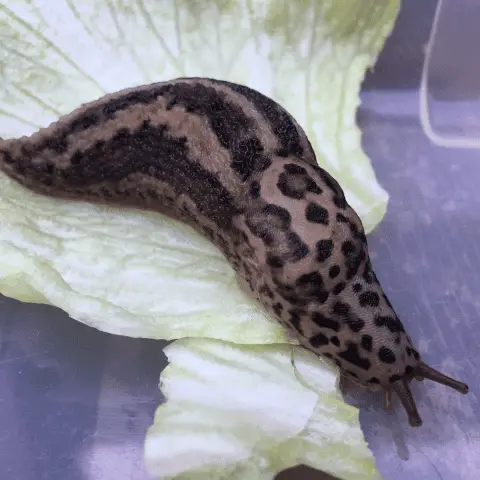
7. You Skipped Pruning
Regular pruning not only keeps your plants bushy and healthy but also encourages growth. Don’t be afraid to snip away — your herbs will be happier for it.
8. You Neglected to Feed Your Herbs
Herbs don’t ask for much, but they do need occasional feeding. An organic all-purpose fertilizer can give them the nutrients they need to grow robustly.
9. You failed to Repot Overgrown Herbs
Over time, herbs can become root-bound in their pots, which stunts their growth and affects their flavor. In this blog post, we’ll show you how to revive your struggling herb garden by repotting overgrown plants.
Identify the Plants That Need Repotting
The first step in reviving your herb garden is identifying which plants need repotting. Signs that your herbs are root-bound include wilting, yellowing leaves, stunted growth, or roots growing out of the drainage holes at the bottom of the pot. Check each plant carefully and make a list of those that need attention.
Choose the Right Pot Size
When it comes to choosing a new pot for your herbs, bigger isn’t always better. A pot that’s too large can hold too much moisture and lead to root rot. On the other hand, a pot that’s too small won’t provide enough room for the plant’s roots to grow. Choose a pot that’s one size larger than its current container.
Preparing Your Herb for Repotting
Before repotting your herb, make sure it’s well-watered so that it won’t dry out during the process. Next, gently remove the plant from its container and loosen any tangled roots using your fingers or a fork. Trim any dead or damaged roots with clean shears.
Repotting Your Herb
Fill the new pot about one-third full with fresh potting soil and place your herb in the center at the same depth as it was in its old container. Add soil around the plant, gently pressing down to remove any air pockets. Water thoroughly and add more soil if necessary.
After repotting your herb, make sure to give it extra care and attention to help it adjust to its new home. Water your plant regularly, but be careful not to overwater as this can lead to root rot. Place your herbs in a sunny location or under grow lights.
10. You Planted at the Wrong Time
Understanding when to plant is crucial. Some herbs are cold-hardy, while others prefer the warmth. Sowing seeds or planting seedlings at the wrong time can set them up for failure.
11. You Lack Patience and Care
Above all, herbs require patience and attention. They might not explode with growth overnight, but with consistent care, they’ll eventually flourish.
Conclusion
Don’t be discouraged if your herb garden has hit a few snags. Identifying the issue is half the battle. Take these insights and apply them to your own slice of paradise. With some tweaks to your planting strategy, you can avoid these common pitfalls and grow an herb garden that is as fruitful as it is aromatic. Remember, every gardener experiences setbacks — what defines success is your ability to learn from them and grow.
You might be interested also in reading these articles:
